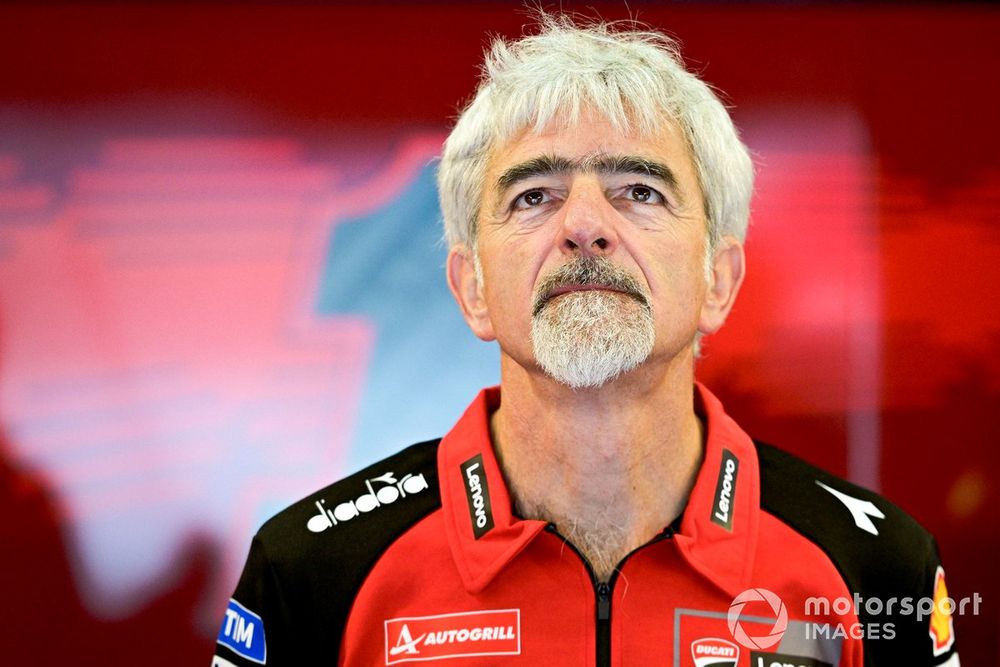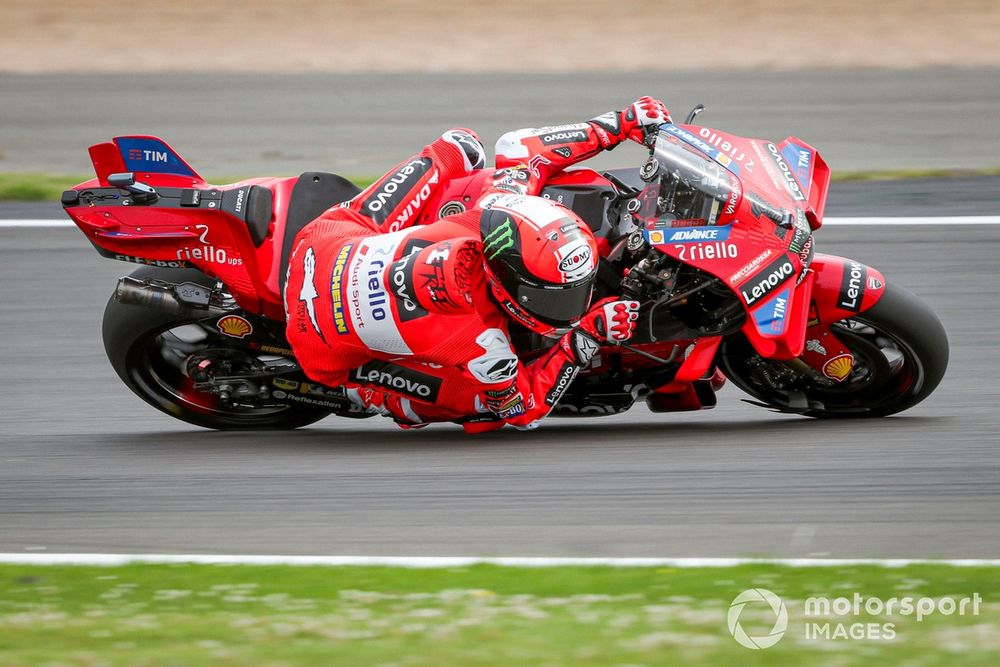Ducati has defended the decision to reduce its involvement to just three factory bikes in the 2025 MotoGP season, saying it won’t negatively impact its performance.
Ducati general manager Gigi Dall’Igna said that cutting down the supply of official bikes from four to three next year was the «best compromise» for the Italian manufacturer as it prepares for Pramac’s exit from its satellite fold.
The Borgo Panigale marque currently has double the representation of any manufacturer on the grid, as it runs eight bikes across the factory, Pramac, VR46 and Gresini teams — four of which are built to the latest GP24 specification.
But with Pramac ending a two-decade-long relationship to join forces with Yamaha in 2025, it will be down to a total of six machines — and only three of those will carry the latest equipment. VR46 will inherit only one factory bike as part of the shake-up, as opposed to two that Pramac currently competes with as part of its agreement.
«At the end, we reduced the total number of bikes because we pass from eight to six bikes, and the best compromise for us is to have three and three: three factory bikes and three last year’s bikes,» Dall’Igna told MotoGP’s official website.
«This is also important for us because the reason why we have satellite teams is to grow up riders.

Luigi Dall’igna, Ducati Team
Photo by: Gold and Goose / Motorsport Images
«At the end of the day, a new rider and a newcomer doesn’t need official bikes, because an official bike means more pressure, more load and so on. Sometimes it is better to start with previous year bikes.»
The change in approach from Ducati leaves it at a numerical disadvantage to its four manufacturer rivals, all of which will provide the latest-spec bikes to their entire line-ups.
In fact, both KTM and Yamaha are strengthening their ties with their respective partner outfits next year and will treat Tech3 and Pramac as second factory teams.
However, Dall’Igna doesn’t think having one fewer official bike in 2025 will be a disadvantage for Ducati, as he remains convinced that the Italian marque will be able to deliver improvements with whatever it has at its disposal.
«We would like to win and we have to do our best to try to keep the potential of the bike,» he said. «But I don’t think having four official bikes is so important for the performance of the official riders.
«Even with last year’s bike we can develop and understand the path that you have to do to improve the bike.»

Francesco Bagnaia, Ducati Team
Photo by: Gold and Goose / Motorsport Images
Two-time MotoGP champion Francesco Bagnaia however doesn’t agree with Dall’Igna, stressing how Ducati will have less data to analyse and improve the Desmosedici next year to stay ahead of the competition.
«It’s not a big difference, not a big disadvantage, but four bikes are better than three,» said the 26-year-old.
«Four bikes give you more data, you understand more things. So for me, it’s better, but I don’t decide these things.
«It was better [with four bikes] also because in the test you can give to all four riders something to do, so like this, we have more things to do in the test.
«Already this year I didn’t finish the job in the test [despite the workload being distributed over four riders]. So I think it was better to have four bikes and to give [both] the factory teams the same bikes.»
One-time MotoGP race winner Fabio Di Giannantonio, who recently agreed a new two-year contract to continue with VR46 until 2026, will be the only rider other than Bagnaia and Marc Marquez to receive what is expected to be known as the GP25.
Franco Morbidelli, Gresini’s Alex Marquez and rookie Fermin Aldeguer will have what will then be a year-old GP24.
Additional reporting by Lorenza D’Adderio








